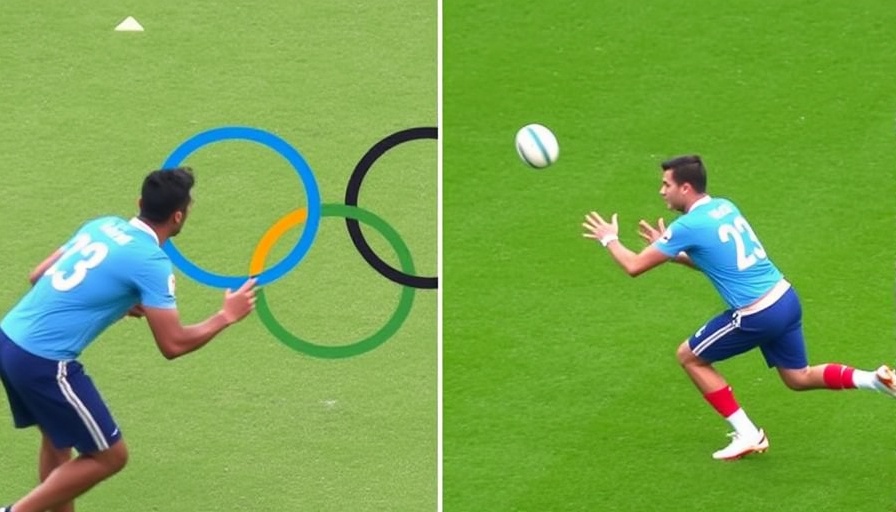
The Exciting Shift: Flag Football in the Olympics
With the inclusion of flag football in the 2028 Los Angeles Olympics, there's palpable excitement among fans and players alike. However, amidst this thrill lies a crucial question: are NFL stars ready for this transformative shift? The answer is layered, as the transition from tackle football, a highly physical sport, to flag football—a game reliant on agility and precision—will present considerable challenges.
Diving into Flag Football’s Unique Dynamics
Amber Clark-Robinson, a figurehead in women's flag football, emphasizes the subtle but impactful differences between the two formats. While both are forms of football, the focus in flag football leans heavily on skill and finesse. Tackling, a hallmark of NFL play, is replaced with strategic maneuvering to avoid defenders, urging players to refine their athletic repertoire drastically. Knowledge and adaptability are key; those who understand the rules and nuances of flag football will have a competitive edge.
Challenges Faced: NFL vs. International Standards
NFL players are accustomed to a certain level of intensity and physicality that might not translate well in flag football. The International Federation of American Football (IFAF) maintains strict rules regarding contact, which can be a significant adjustment for NFL athletes. Clark-Robinson points out that the level of contact is called very differently, and understanding these rules will influence how NFL stars perform on the Olympic stage. Adapting from a tackle mindset will be essential for success.
The Growing Talent Pool
As flag football gains traction globally, the talent pool is expanding, and competition is intensifying. Emerging players from various backgrounds are eyeing Olympic glory. Clark-Robinson highlights how each new year's tryouts become more challenging as the talent improves significantly. As the stakes rise, NFL players might find themselves up against established flag football athletes who are well-versed in the game’s intricacies. Thus, many players may find themselves needing to work harder than expected to secure their Olympic spots.
Why NFL Stars Dream of Olympic Gold
The Olympics symbolize the pinnacle of athletic achievement. For many athletes, competing on such a platform is a lifelong dream. Clark-Robinson herself has harbored Olympic aspirations throughout her sports career. The prestige of the Olympic Games transcends the sports themselves, representing a chance for athletes to showcase their skills on the world stage amidst an international audience. NFL players, when considering participation, aren't merely aiming to compete—they're seeking to fulfill a dream that extends beyond their professional careers.
Making the Transition: Preparation and Mindset
To ensure a successful transition to flag football, NFL players must invest in preparation, both mentally and physically. This might involve intense study sessions on flag football strategies and engaging in specific training regimens that focus on agility and control. As Clark-Robinson aptly states, if NFL players earnestly invest the time and effort to educate themselves about flag football, they could dramatically enhance their chances of making the Olympic team and even clinching gold. Preparation is inherently tied to understanding and respect for the game.
Conclusion: A Call to Action for Potential Olympians
The road to the Olympics is paved with challenges, particularly when transitioning from tackle football to the nuances of flag football. NFL players need to approach this transition with diligence and openness to adapt; those who step up will continue to carry the torch of excellence. As the countdown to LA28 begins, one thing remains clear: the journey toward Olympic glory isn’t just about athletic prowess; it's about passion, research, and commitment to the game in all its forms. NFL athletes, if you're considering this passion project, embrace the challenge—your Olympic dream awaits!
 Add Row
Add Row  Add
Add 




Write A Comment